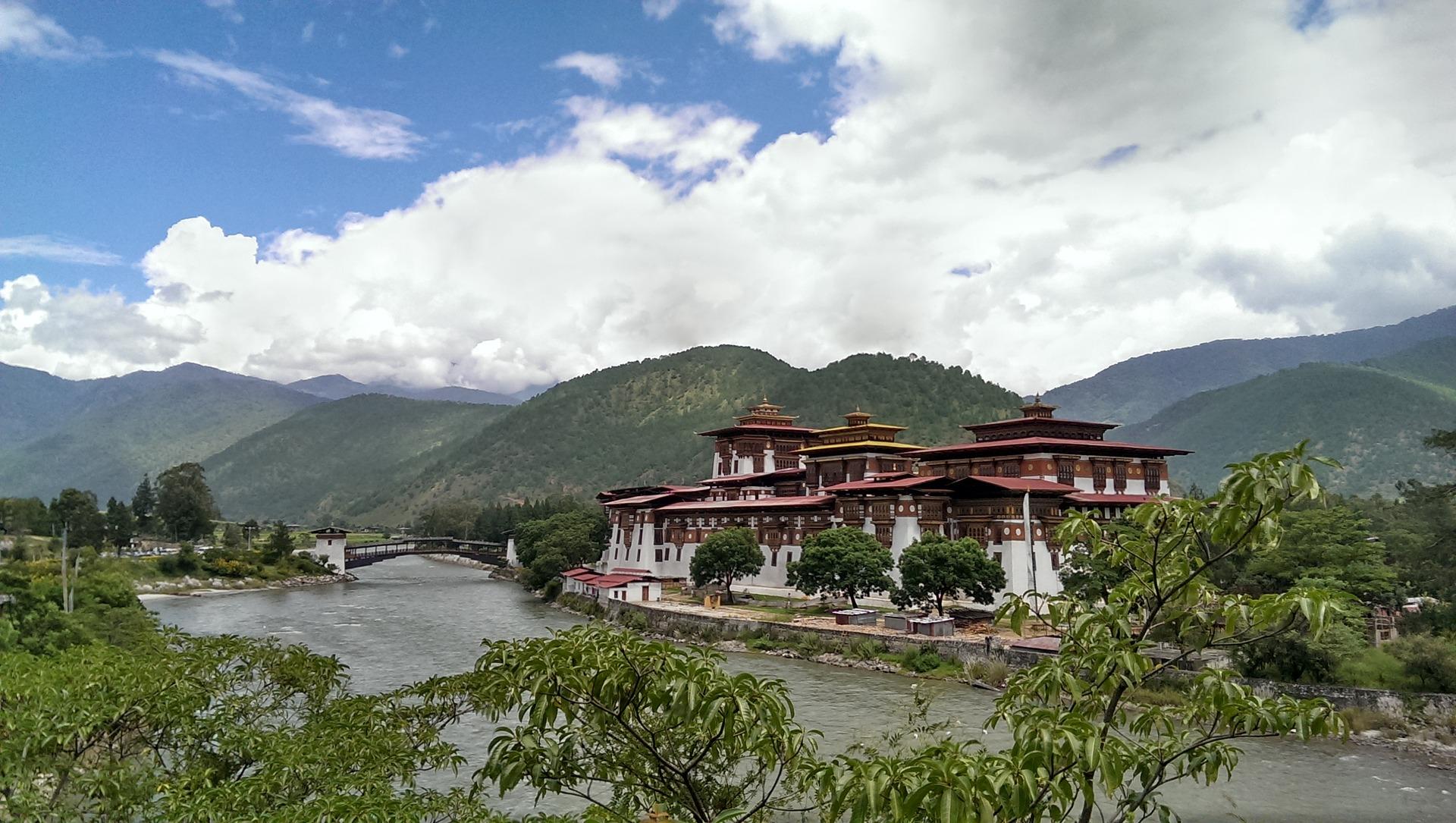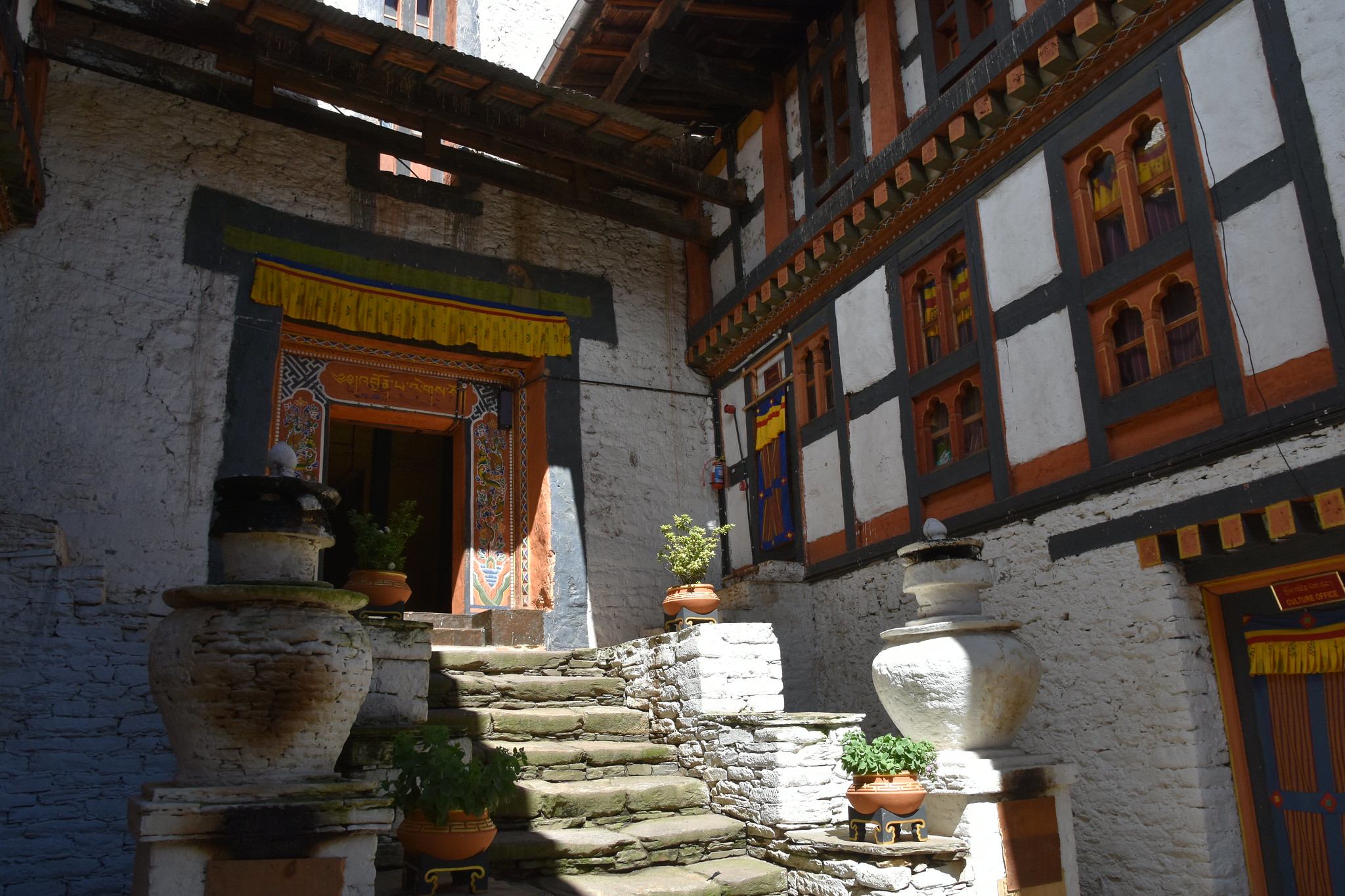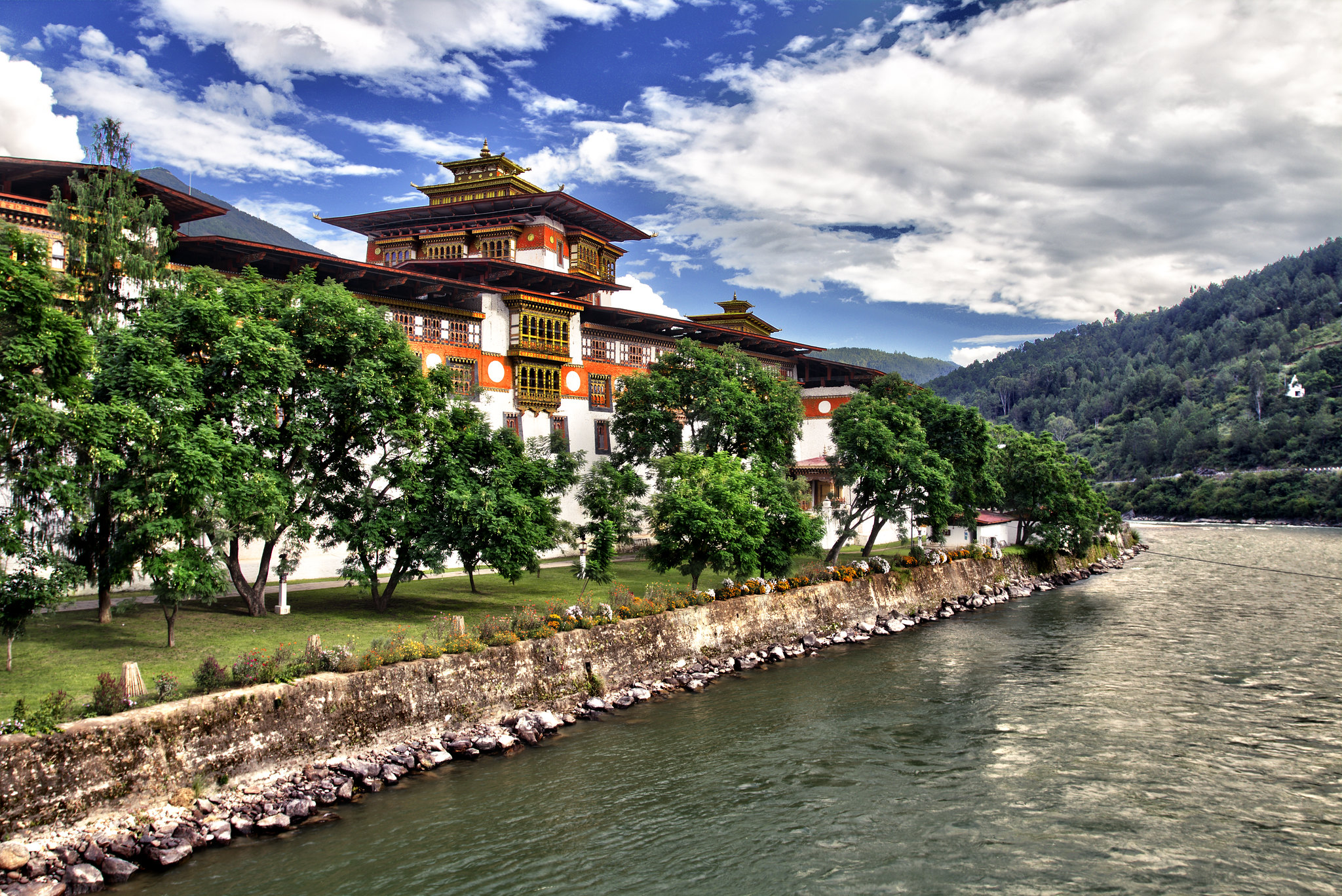If you’re like so many avid travelers right now, you’re ramping up your plans for the coming months and years. It has been too long since we’ve roamed the world and soon, we hope, we’ll be out there again, discovering new destinations and cultures and becoming true global citizens.
When it comes to those bucket-list destinations that took a back seat during Covid, Bhutan is an oft-mentioned one. This tiny landlocked country doesn’t see a lot of visitors, but for those who dream of making the journey, and ultimately do, the experience is wondrous.
To figure out just where to go when you visit Bhutan, we’ll focus on five of the top dzongs (fort-monasteries) that are so ubiquitous throughout this eastern Himalayan country. Stunning religious buildings dot the entire landscape of the country, including goembas (Buddhist monasteries) and lhakhangs (“God houses”). The dzongs, in particular, were built in places of strategic military importance and inhabited by penlops (regional governors) and dzongpens (dzong lords). Today, many of these dzongs, which over the centuries have housed important relics and texts, are important religious and cultural hubs and the location of many of Bhutan’s colorful festivals.
If it were up to us, these are the top five Bhutan dzongs we would visit - see if you agree.
Trongsa Dzong
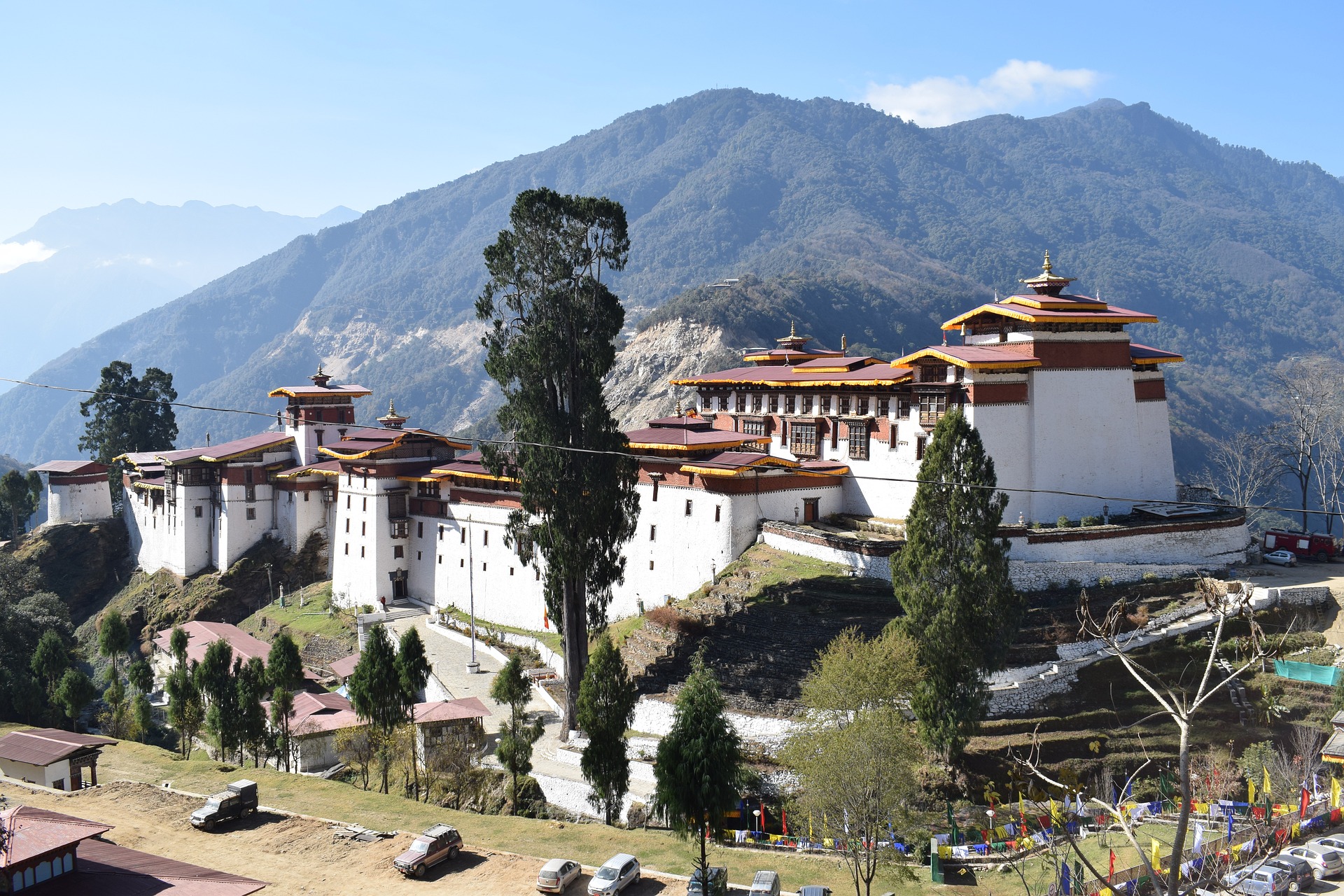
In the heart of the country, Trongsa Dzong was built in 1648 on what, at the time, was the sole route between east and west Bhutan. Its picturesque perch high atop the rushing Mangde Chhu river gives it a regal look - you can just imagine the dzongpens gazing down upon their kingdom from on high. From the dzong, you’ll have fantastic views of the surrounding valleys.
Lhuentse Dzong
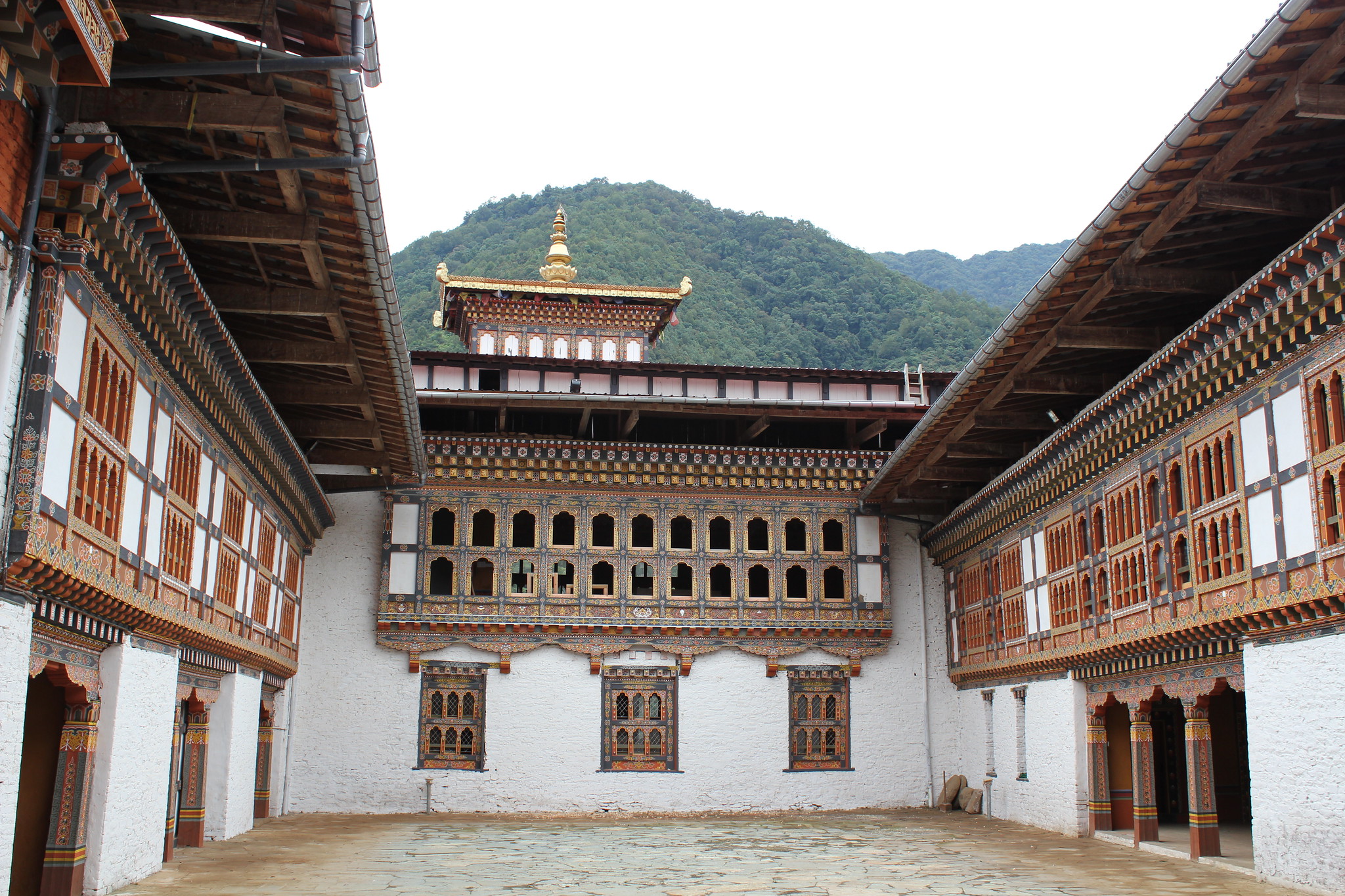
Image by Arian Zwegers on flickr
This quiet area in Bhutan’s eastern province is the ancestral home of the Bhutanese royal family. It’s known for its weaving traditions -some of the country’s most impressive weavings are still produced here. The Lhuentse Dzong, home to a small number of monks, sits at the end of the Kuri Chhu valley on a rocky promontory. It doesn’t receive many visitors, so you’ll have a more authentic, peaceful visit here than at some of the larger dzongs.
Jakar Dzong
Image by Richard Mortel on flickr
Dating back to 1549 when it was originally a monastery, the Jakar Dzong, high above the lush Chokhor Valley, was once the seat of the first king of Bhutan. It expanded into a dzong in 1667. The dzong’s sheltered passageway to a nearby spring is unique - it was built to ensure a steady water supply to inhabitants during times of siege. During your visit, you’ll likely hear of the story of how the dzong’s site was chosen. A group of lamas were searching for a suitable location and took as a good omen the site of a single white bird circling the spot. Today, the dzong is still lovingly referred to as the “Castle of the White Bird.”
Punakha Dzong
Image by Ashwin Mudigonda on flickr
Sitting at the confluence of the Mo Chhu and Po Chhu (“mother and father” rivers), Punakha Dzong presides over its namesake valley. A central body of monks winters here (leaving their northern location during the colder months), in the 17th-century dzong. It was only the second to be built in the country and is considered its most striking in appearance. In the spring, the jacaranda trees erupt in a riot of lilac, set off by the crimson-robed monks who stroll amidst the foliage.. Gorgeous murals depict the life of Buddha. You’ll also find here the preserved remains of Zhabdrung Ngawang Namgyal, who unified Bhutan as a nation state.
Taschichho Dzong
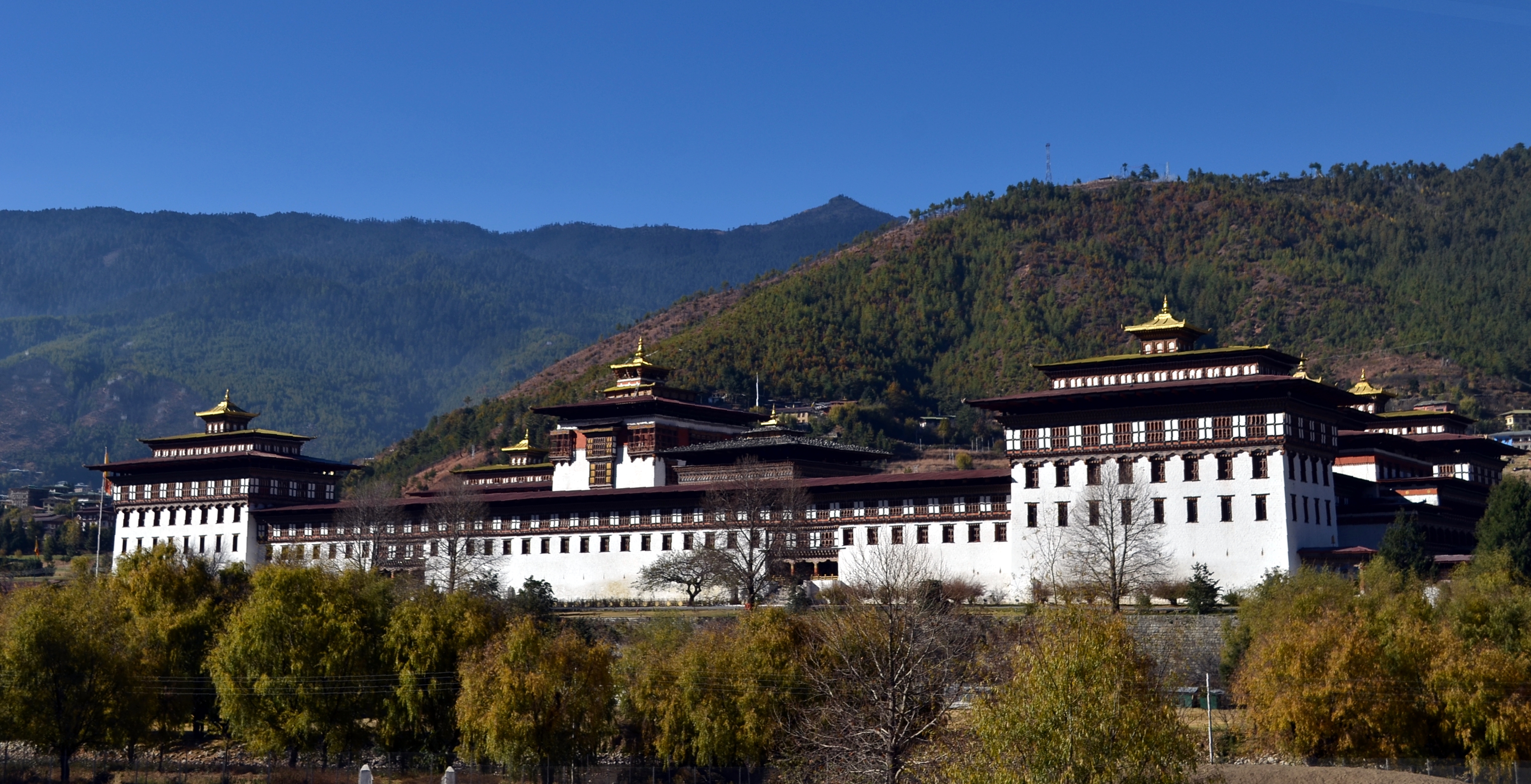
Image source Wikimedia Commons
This ancient fortress is at the northern edge of the Bhutanese capital, Thimphu, on the Wang Chu river. Today it is home to religious and administrative activities, living up to its translated name, “the fortress of the glorious religion.” The oldest parts of the dzong date from the original fortress, including the Utse towers (watchtower), Lhakhang Sarp (new temple) and Gankhang (protector temple). It was the home of the royal family of Bhutan until they moved to Dechencholing Palace.
Ready to discover the dzongs of Bhutan? We can craft your once-in-a-lifetime journey around these religious sites and fortifications. Let’s chat. You can sign up to schedule a consultation or sign up for my weekly newsletter for more inspiration.

